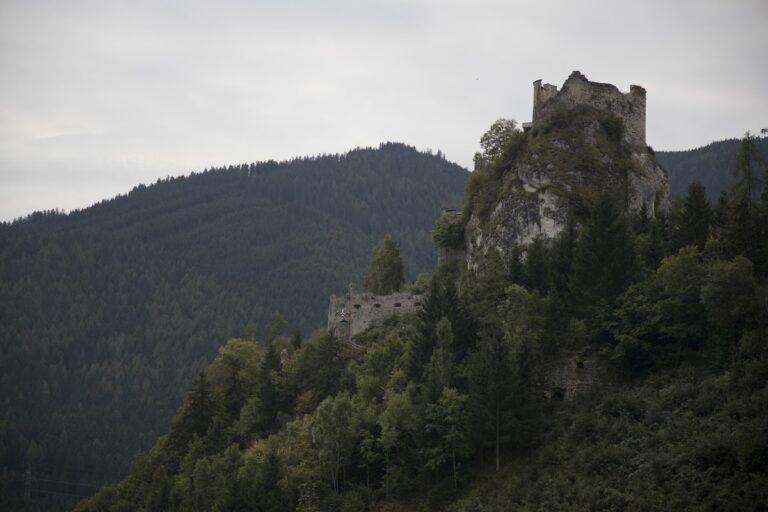Burgruine Steinschloß: A Medieval Castle Ruin in Neumarkt, Austria
Visitor Information
Google Rating: 4.8
Popularity: Low
Google Maps: View on Google Maps
Official Website: www.steinschloss.at
Country: Austria
Civilization: Unclassified
Remains: Military
History
Burgruine Steinschloß is a castle ruin located in the municipality of Neumarkt, Austria. It was originally built during the medieval period by the noble family von Stein, who established it as a fortified residence in the 12th century. The site sits prominently on a hillside, chosen for its strategic vantage.
During the late Middle Ages, ownership of the castle changed hands. In 1503, the influential Liechtenstein family, who then held the estate, sold Steinschloß to the St. Lambrecht Abbey. This transfer placed the castle under ecclesiastical control, a status that has continued to the present day.
The early 16th century brought renewed military significance to the castle. In 1525, amid widespread peasant uprisings and the threat of Turkish invasions in the region, the castle underwent additional fortifications. These enhancements reflected its role as a defensive stronghold responding to regional instability.
Local traditions preserve several legends tied to the castle and its noble founders. Stories speak of the von Stein family and dramatic conflicts with neighboring noble houses such as the von Kaisersberg. These tales highlight the castle’s importance within the community’s folklore and its enduring cultural presence.
Remains
The ruins of Burgruine Steinschloß reveal a large and clearly defined hill castle (Höhenburg) complex strategically positioned atop a steep rock face. This elevated location offered natural defensive advantages and shaped the original layout of the fortification. The remains allow visitors to grasp the considerable size of the castle’s defensive structures.
Built primarily as a military stronghold, the castle’s stone construction formed thick walls that once enclosed the noble residence and defensive quarters. Although specific building materials are not detailed in sources, the preservation of the ruins permits a clear understanding of the castle’s overall scale and design.
Today, the castle’s extensive ruins maintain enough integrity to outline the boundaries and internal divisions of the fortification. Despite their ruinous state, the surviving structures provide insights into the medieval methods of fortress construction and the adaptive strategies used in response to the military threats of the 16th century.
Historical associations with the von Stein family and their legendary conflicts lend the site an additional layer of cultural meaning, linking the physical remains to narratives preserved through regional storytelling. This intertwining of archaeology and legend underscores the castle’s significance beyond its purely military function.










